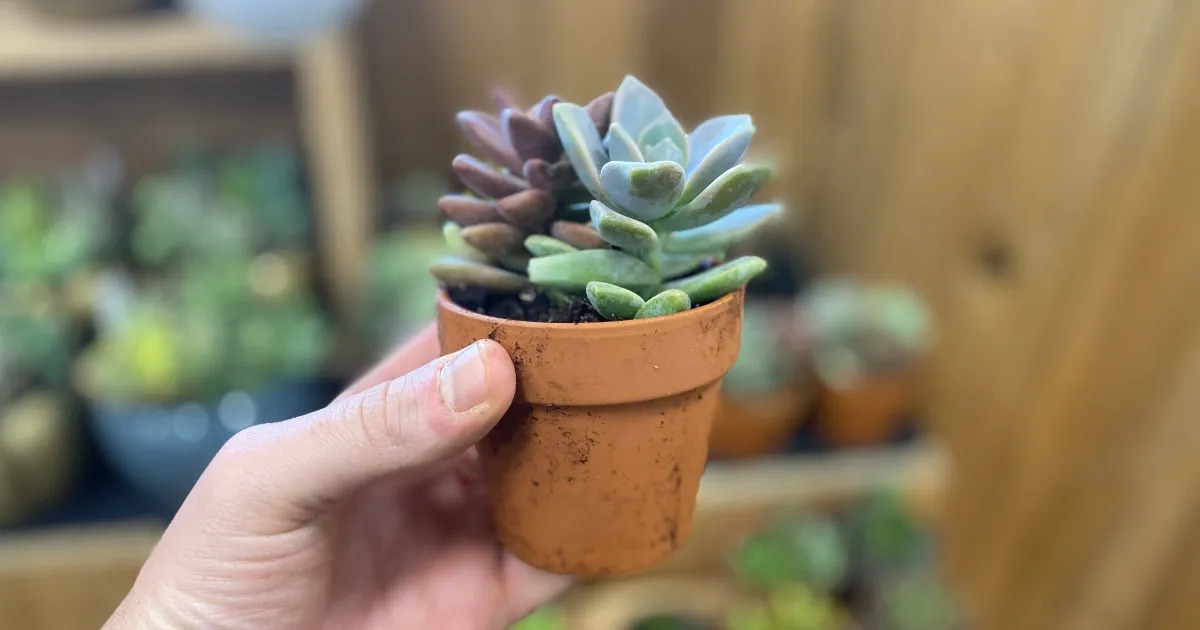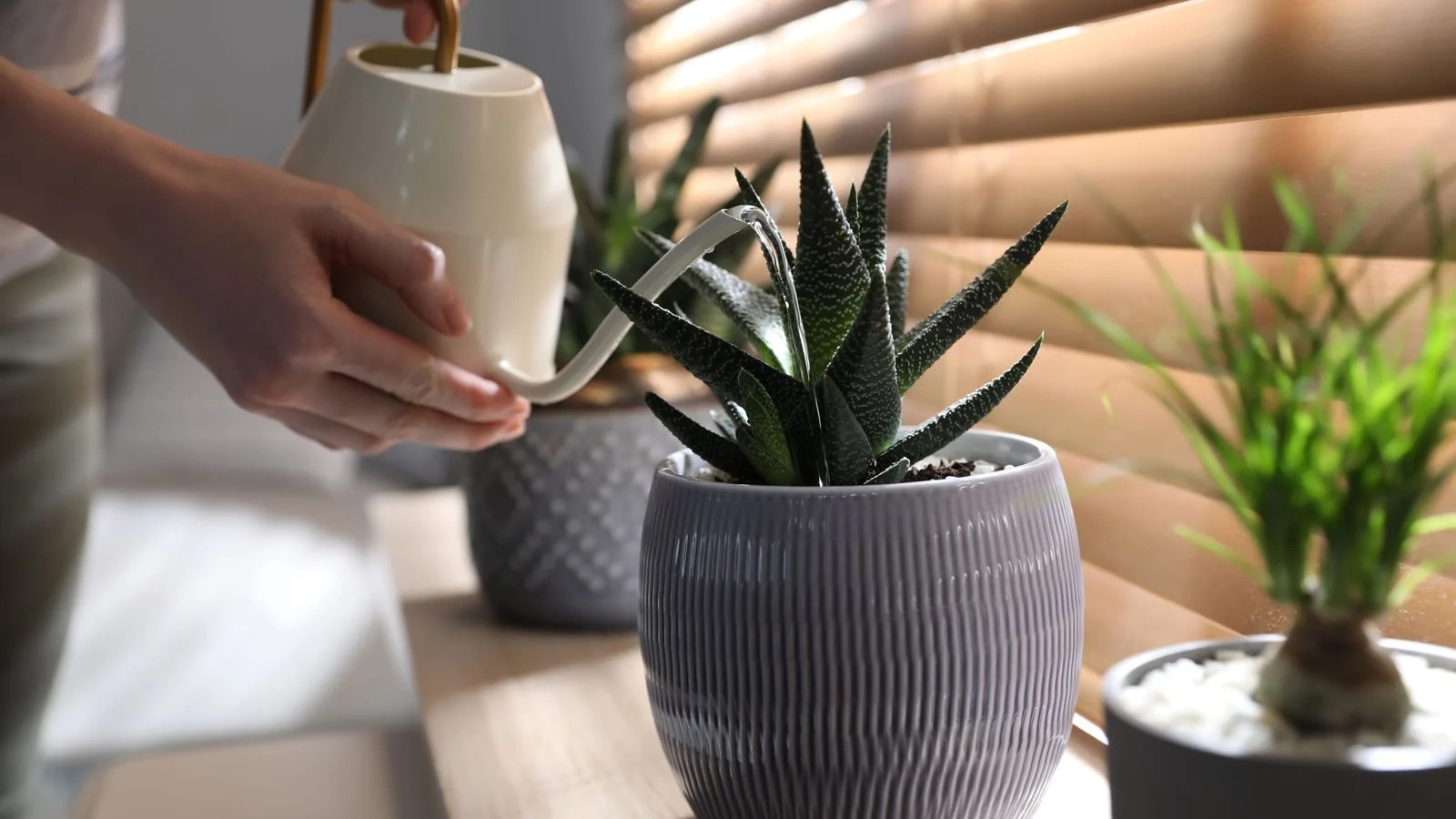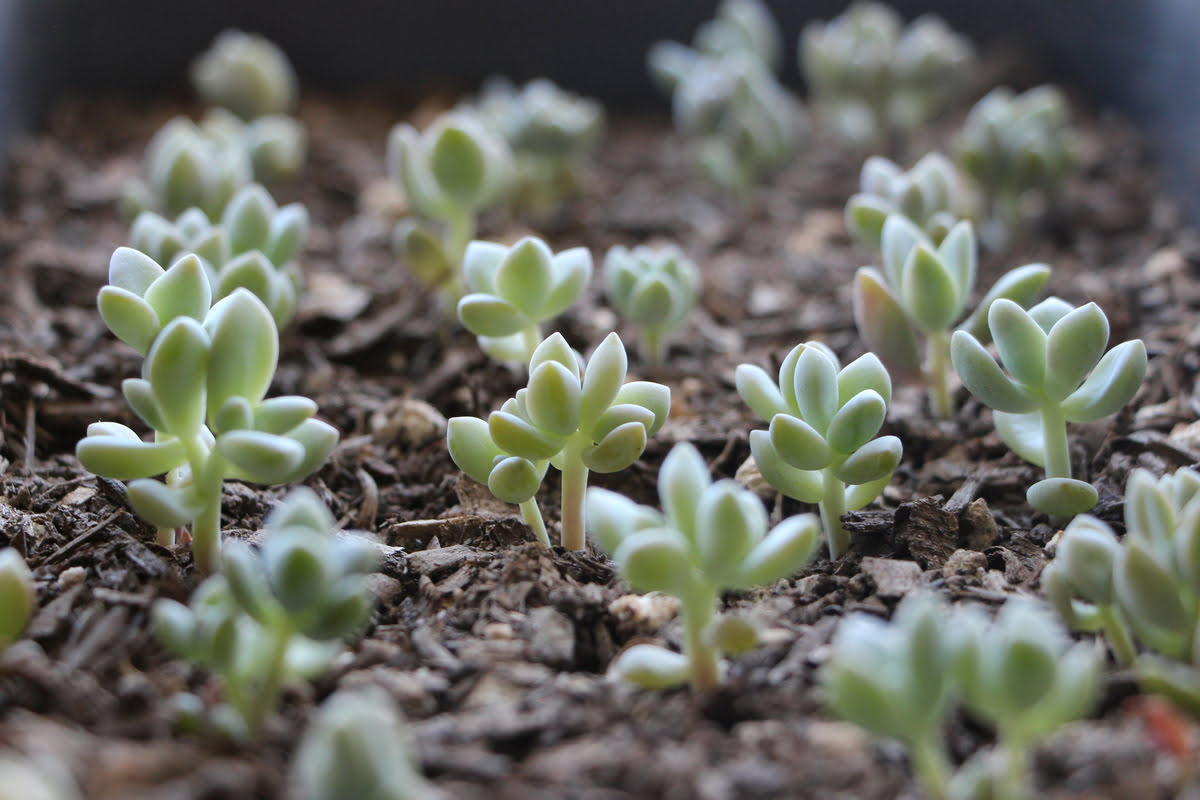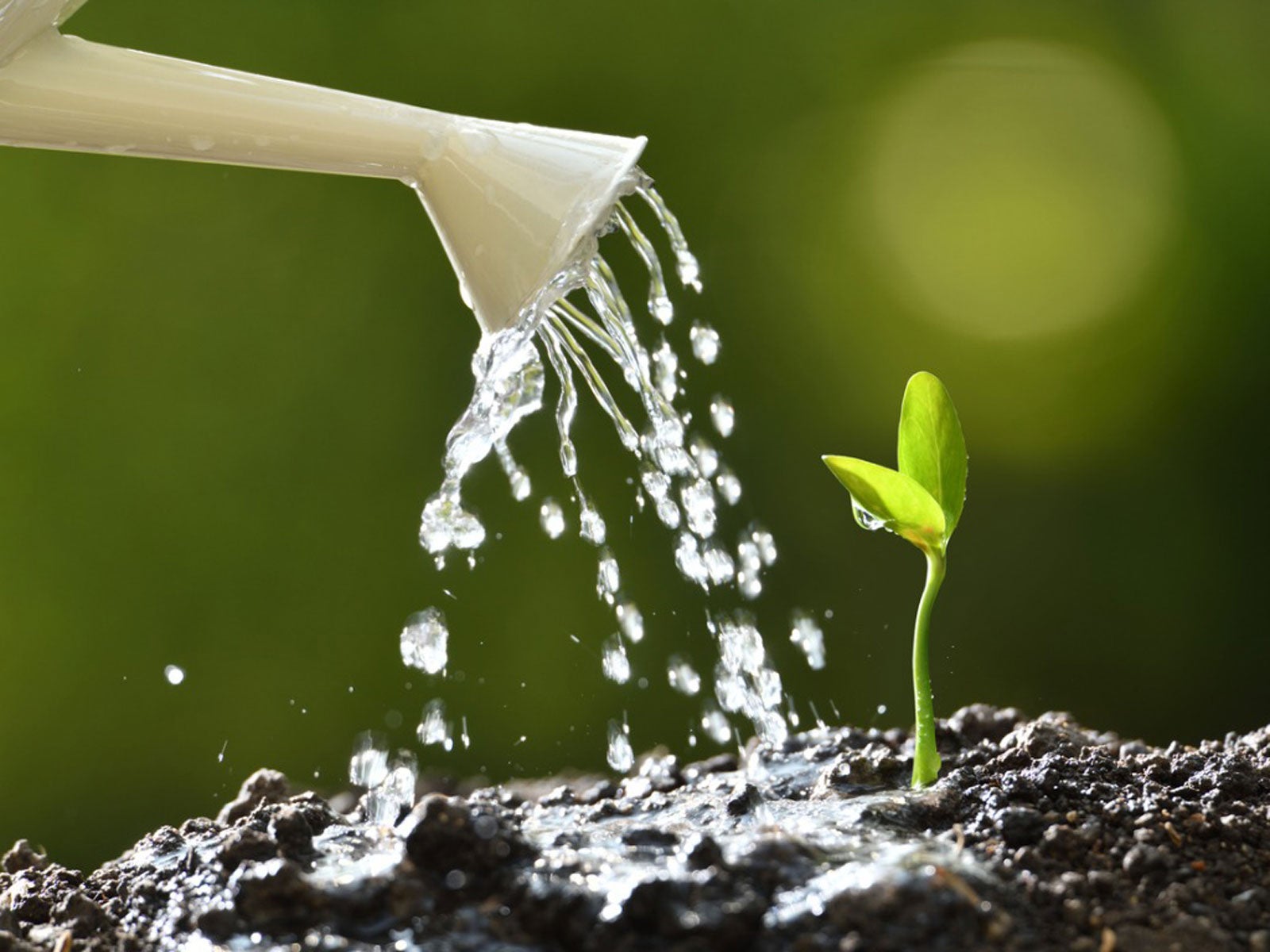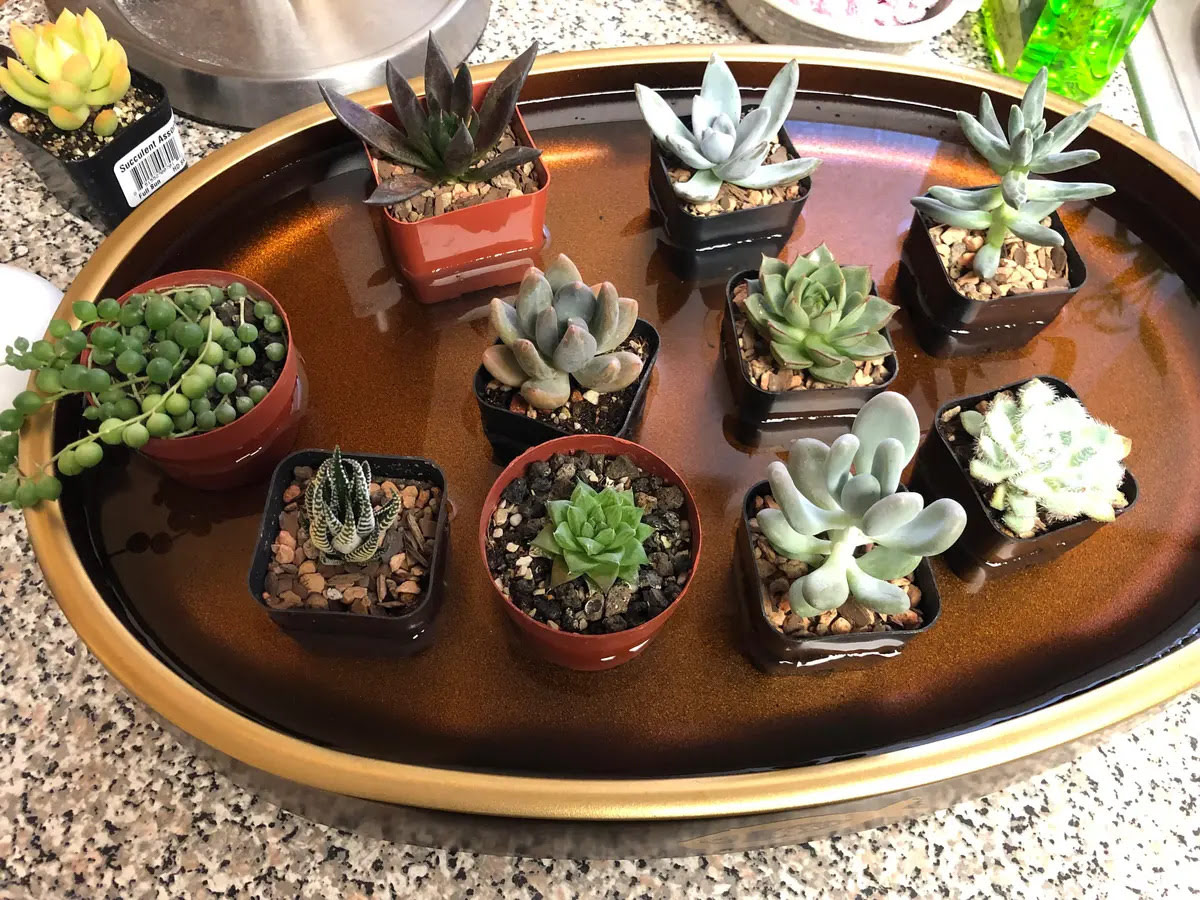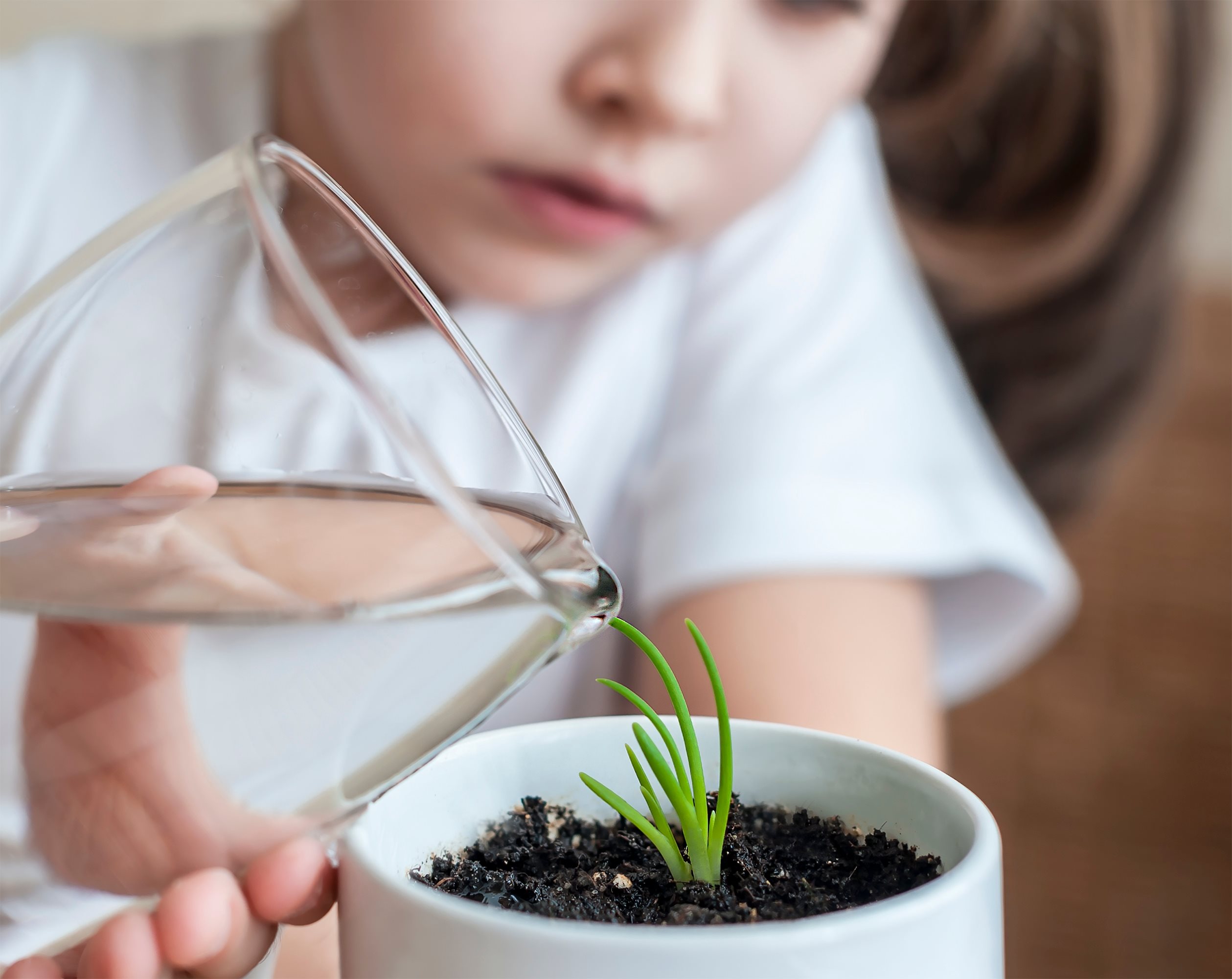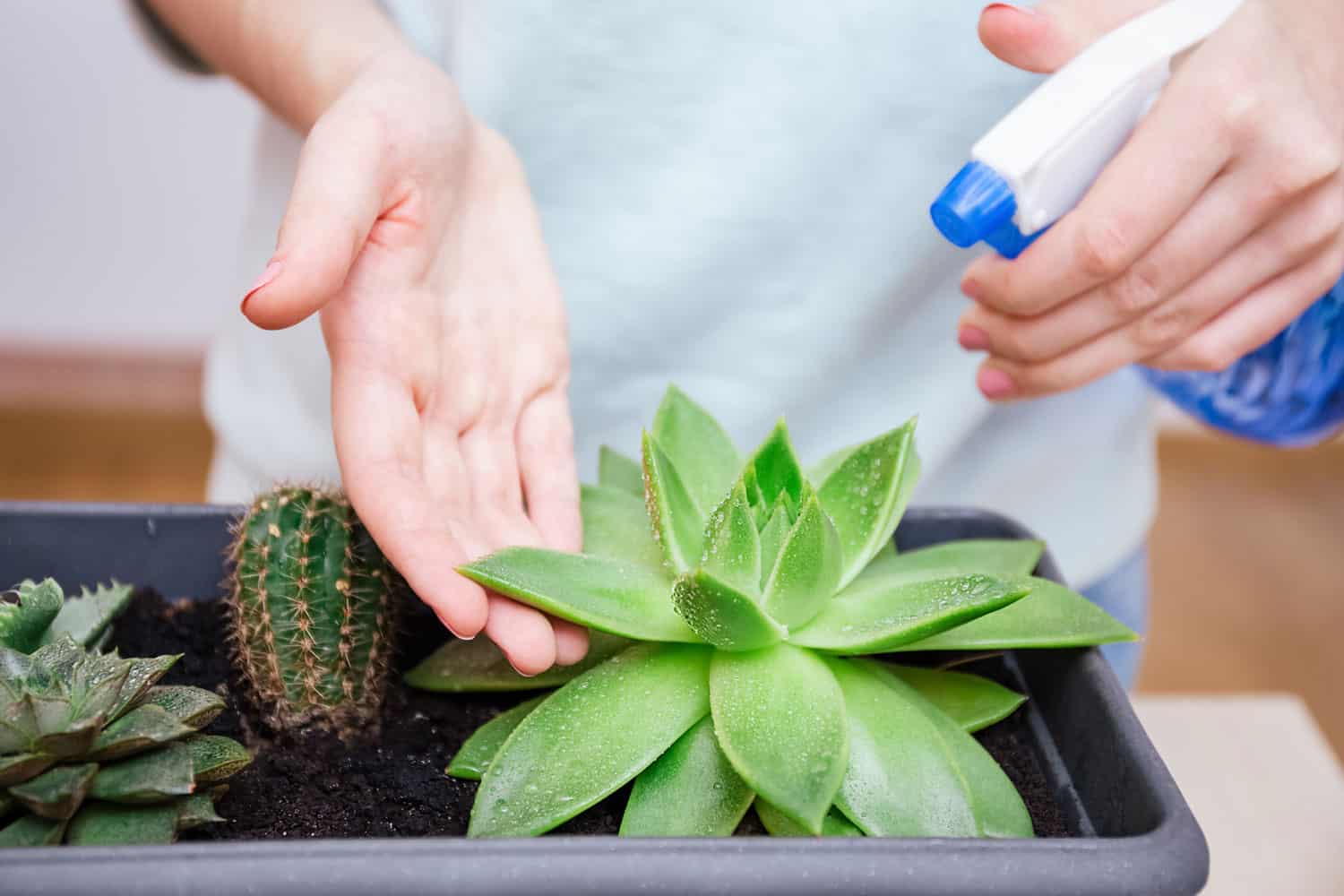Home>Gardening Techniques>Plant Care>How Often And How Much Do You Water Succulents
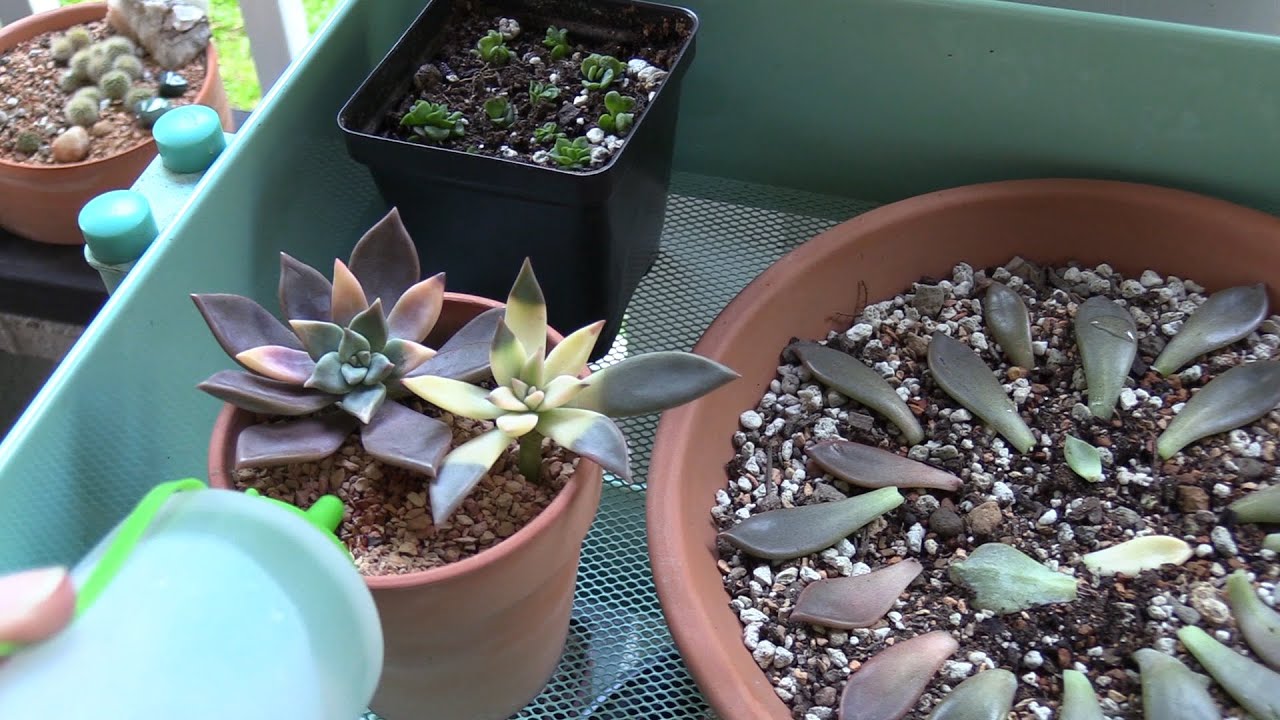

Plant Care
How Often And How Much Do You Water Succulents
Modified: February 9, 2024
Learn the best practices for watering succulents. Discover how often and how much water is needed for optimal plant care.
(Many of the links in this article redirect to a specific reviewed product. Your purchase of these products through affiliate links helps to generate commission for Chicagolandgardening.com, at no extra cost. Learn more)
Table of Contents
Introduction
Welcome to the world of succulents, where you can delight in the beauty of these resilient and unique plants. Succulents have gained popularity among plant enthusiasts due to their striking appearance and easy-to-care-for nature. Whether you are a seasoned gardener or just starting out, understanding how to properly water your succulents is crucial for their overall health and longevity.
Succulents, which include a wide variety of plants like aloe vera, echeveria, and jade plants, are renowned for their ability to store water in their leaves, stems, and roots. This adaptation allows them to thrive in arid environments where water is scarce. However, it also means that they have different watering needs compared to other types of houseplants.
By learning the fundamentals of succulent watering, you can ensure that your plants receive the right amount of hydration without risking overwatering or underwatering. Proper watering techniques will not only keep your succulents healthy but also enhance their growth, color, and resilience.
In this article, we will explore essential factors to consider when watering succulents, how often to water them, signs of overwatering and underwatering, how much water to give them, and best practices for watering. By the end of this article, you will have the knowledge and confidence to become a successful succulent caretaker.
Understanding Succulents’ Watering Needs
Before we delve into the specifics of watering succulents, it’s essential to grasp the unique watering needs of these remarkable plants. Succulents have evolved to survive in arid environments with sporadic rainfall, which means they have adapted to store water in their leaves, stems, and roots. This built-in water storage system allows succulents to withstand drought and thrive in dry conditions.
Unlike most other houseplants that require frequent watering, succulents prefer infrequent but deep watering. This is because their water storage capabilities enable them to survive for extended periods without moisture. Overwatering can lead to root rot and other issues, so it is crucial to understand the balance between providing enough water and avoiding excess moisture.
Additionally, succulents have varying water needs depending on factors such as their species, size, and environmental conditions. Some succulents, like cacti, naturally thrive in desert-like conditions and require minimal water, while others may need more frequent hydration. It’s important to research the specific requirements of your succulent species to ensure optimal care.
Furthermore, the time of year can also affect succulents’ watering needs. During the active growing season, which typically occurs in spring and summer, succulents may require more water due to increased growth and evaporation. In contrast, during their dormant period in fall and winter, succulents generally need less water as they experience slower growth and reduced evaporation.
Understanding these underlying principles of succulents’ water storage abilities and their environmental adaptations will serve as the foundation for effectively watering your succulent plants. By meeting their watering needs appropriately, you can help your succulents thrive and enjoy their unique beauty.
Factors to Consider When Watering Succulents
When it comes to watering succulents, several factors need to be taken into consideration to ensure proper care and growth. By understanding these factors, you can tailor your watering routine to meet the specific needs of your succulents. Let’s explore some key factors to consider:
- Succulent species: Different species of succulents have varying water requirements. Some succulents, such as Aloe vera and Haworthia, prefer drier conditions and require less frequent watering. On the other hand, certain succulents like Echeveria and Sedum may need more frequent watering. Research the specific watering needs of your succulent species to avoid under or overwatering.
- Pot size and drainage: The size of the pot and the presence of drainage holes can significantly impact succulents’ watering needs. Succulents should be potted in well-draining containers to prevent water from sitting in the roots, which can lead to rot. Smaller pots tend to dry out more quickly, requiring more frequent watering compared to larger pots.
- Environmental conditions: The climate and indoor environmental factors can influence how often you need to water your succulents. Succulents in hot, dry climates will generally require more frequent watering to compensate for increased evaporation. Indoor succulents may have different watering needs based on factors such as humidity, temperature, and air circulation.
- Seasonal changes: As mentioned earlier, succulents’ watering needs can vary depending on the time of year. During the active growing season in spring and summer, succulents may need more water to support their growth. In contrast, during fall and winter, when succulents go into dormancy, they require less water as their metabolic processes slow down.
By considering these factors, you can develop a watering routine that suits your succulents’ needs. Remember that it’s essential to observe your plants and make adjustments as necessary. Pay attention to how quickly the soil dries out and monitor the overall health of your succulents to ensure they receive the ideal amount of water.
How Often to Water Succulents
One of the most common questions among succulent enthusiasts is how often to water these resilient plants. While there is no one-size-fits-all answer, understanding the general guidelines can help you develop a watering schedule that works for your succulents.
As a rule of thumb, succulents prefer infrequent but deep watering. Rather than giving them a small amount of water every day, it’s better to thoroughly soak the soil and then allow it to dry out before watering again. This mimics their natural environment and encourages the roots to grow deeper and become more drought-resistant.
The frequency of watering will depend on several factors, including the succulent species, pot size, and environmental conditions. In general, it’s recommended to wait until the soil has completely dried out between waterings. This means that you should insert your finger into the soil about an inch deep to check for moisture. If it feels dry, it’s time to water your succulents.
During the active growing season, which typically occurs in spring and summer, succulents may need more frequent watering. Depending on the species, this might range from once a week to every two weeks. However, it’s important to assess each succulent individually to determine its specific watering needs.
In contrast, during the dormant period in fall and winter, succulents enter a phase of reduced growth and require less frequent watering. Generally, you can reduce watering to once every two to three weeks or even longer, depending on your specific succulent and the environmental conditions.
Remember, it’s always better to underwater than overwater your succulents. Succulents can tolerate dry conditions, but they are highly susceptible to root rot caused by overwatering. It’s safer to err on the side of underwatering and adjust your watering schedule accordingly based on the needs of your succulents.
Keep in mind that these are general guidelines, and it’s crucial to monitor each succulent’s response to watering. Factors such as temperature, humidity, and the type of soil mix used can also influence how quickly the soil dries out. By observing your succulents closely and adapting your watering routine accordingly, you can ensure their optimal health and growth.
Signs of Overwatering Succulents
Overwatering is one of the most common mistakes when it comes to caring for succulents. These hardy plants are adapted to survive in arid conditions and are highly susceptible to root rot and other issues when exposed to excess moisture. It’s crucial to learn the signs of overwatering to prevent potentially irreversible damage to your succulents.
Here are some common signs that your succulent may be receiving too much water:
- Yellowing or translucent leaves: Overwatered succulents often display yellow or translucent leaves. This is due to the excess moisture causing the leaves to swell and become waterlogged. The leaves may also feel soft or mushy to the touch.
- Leaf drop: If your succulent starts losing leaves, especially from the lower portion of the plant, it may be a sign of overwatering. The excessive moisture can lead to root rot, causing the leaves to wither and fall off.
- Mold or fungal growth: Overwatering creates a favorable environment for mold and fungal growth. If you notice any white, fuzzy, or slimy patches on your succulent’s leaves or around the soil surface, it may indicate an overwatering problem.
- Soft or mushy roots: When you inspect the roots of an overwatered succulent, you may find that they are soft or mushy instead of firm and plump. This is a clear sign of root rot, which is a serious condition that can be fatal for succulents.
- Soggy or foul-smelling soil: Overwatering leads to waterlogged soil that remains consistently wet. If the soil around your succulent feels constantly damp or emits a foul smell, it is a sign that you are overwatering.
If you observe any of these signs, it’s important to take immediate action to rectify the situation. Stop watering your succulent and allow the soil to dry out completely. You may need to remove the affected leaves or even repot the plant if the root rot is severe.
Prevention is key when it comes to overwatering succulents. Ensure that you are using a well-draining potting mix specifically designed for succulents. Only water your succulents when the soil has completely dried out, and adjust your watering schedule based on the specific needs of each plant. By being mindful of the signs of overwatering and adjusting your care routine accordingly, you can help your succulents thrive.
Signs of Underwatering Succulents
While succulents are known for their ability to withstand dry conditions, underwatering can still be detrimental to their health. These plants require a balance of moisture to thrive and can show signs of stress when deprived of adequate water. It’s important to be aware of the signs of underwatering so you can promptly address the issue.
Here are some common signs that your succulent may be experiencing underwatering:
- Shriveling leaves: One of the most noticeable signs of underwatering is when succulent leaves start to wilt and shrivel. As the plant loses moisture, the leaves may appear deflated and show signs of dehydration. They may also feel dry and brittle to the touch.
- Slow or stunted growth: Succulents that are not receiving enough water may exhibit slow or stunted growth. If you notice that your succulent has stopped growing or has smaller and thinner leaves, it may be a sign that it is not receiving adequate hydration.
- Leaves turning brown or crispy: When succulents are underwatered, the leaves may begin to turn brown or develop crispy edges. This is a visible indication that the plant is not receiving enough moisture to sustain healthy leaf cells.
- Dormancy: Some succulents naturally go dormant during certain periods, such as winter. However, if you notice a prolonged period of dormancy outside of their normal seasonal cycle, it could be a sign of underwatering. Succulents that are consistently underwatered may enter this state to conserve energy and water.
- Roots breaking away from the soil: When succulents do not receive enough water, their roots may dry out and break away from the soil. This can be observed when gently pulling the plant out of the pot and seeing loose or disconnected roots.
If you notice any of these signs, it’s crucial to adjust your watering practices to provide your succulent with the necessary moisture. Start by thoroughly watering the plant and allowing the excess water to drain from the pot. Repeat this process only when the soil has completely dried out.
Remember that succulents prefer infrequent but deep watering. It’s better to underwater than overwater, so it’s important to find the right balance. Monitor your succulent closely and make adjustments based on its specific needs and environmental conditions. By staying attentive to the signs of underwatering and providing adequate hydration, you can help your succulents thrive and maintain their vibrant appearance.
How Much Water to Give Succulents
Providing the right amount of water to your succulents is crucial for their overall health and well-being. With their water-storing ability, succulents have adapted to survive in low-water environments. Knowing how much water to give your succulents will help prevent issues like overwatering or underwatering.
When it comes to watering succulents, it’s important to focus on two key aspects: the amount of water and the watering technique. Here are some guidelines to help you determine how much water to give your succulents:
- Water thoroughly: When you water your succulents, make sure to give them a thorough soak. This means watering until the water flows out of the drainage holes at the bottom of the pot. This ensures that the moisture reaches the roots and encourages deeper root growth.
- Avoid shallow watering: Succulents have shallow root systems, so shallow watering can lead to ineffective hydration and encourage shallow root growth. It’s important to water deeply, ensuring the water penetrates the entire root zone.
- Consider the pot size: The size of the pot also plays a role in determining how much water to give your succulents. Smaller pots tend to dry out more quickly, whereas larger pots hold more moisture. Adjust your watering frequency and amount based on the size of the pot.
- Observe the soil: One of the best indicators of whether your succulents need water is the moisture level of the soil. Before watering, insert your finger about an inch into the soil. If it feels dry, it’s time to water. If it still feels slightly moist, wait a few more days before watering.
- Consider environmental factors: Environmental conditions such as temperature and humidity can influence your succulents’ water needs. Succulents in hot, dry climates may require more frequent watering, while those in cooler and more humid environments may need less.
It’s important to note that the frequency and amount of water will vary depending on various factors, including the succulent species, potting mix, and environmental conditions. It’s always best to observe your succulents closely and adjust your watering routine accordingly. Err on the side of underwatering rather than overwatering, as succulents are better equipped to tolerate dry conditions than excessive moisture.
By understanding the needs of your succulents and following these guidelines, you can ensure that they receive the right amount of water for optimal growth and health.
Best Practices for Watering Succulents
To effectively care for your succulents and ensure their long-term health, it’s important to follow some best practices when it comes to watering. By implementing these practices, you can create an optimal watering routine that meets the needs of your succulents. Here are some best practices to consider:
- Use well-draining soil: Succulents thrive in well-draining soil that allows excess water to flow through and prevents water from sitting in the roots. Use a specialized succulent or cactus potting mix, or add perlite or pumice to regular potting soil to enhance drainage.
- Water deeply, but infrequently: Succulents prefer infrequent but deep watering. When you water, make sure to thoroughly saturate the soil until the excess water drains out from the bottom of the pot. Then allow the soil to dry out completely before watering again.
- Water based on the soil, not on a schedule: Rather than watering on a fixed schedule, it’s best to water succulents based on the moisture level of the soil. Check the soil regularly by inserting your finger about an inch deep. If it feels dry, it’s time to water; if it’s still slightly moist, wait a few more days.
- Water at the right time of day: The best time to water succulents is in the morning or early afternoon. This allows any excess moisture on the leaves to dry before cooler evening temperatures set in, reducing the risk of fungal or bacterial diseases.
- Avoid spraying the leaves: When watering succulents, it’s best to avoid spraying water directly on the leaves. Instead, focus on watering the soil directly at the base of the plant. Wet leaves can promote the growth of mold and fungi, leading to potential damage.
- Adjust watering during different seasons: Succulents’ water needs can vary depending on the time of year. During the active growing season in spring and summer, they may require more frequent watering. In fall and winter, when they enter dormancy, watering should be reduced to prevent overwatering in cooler conditions.
- Monitor for signs of overwatering or underwatering: Regularly inspect your succulents for signs of overwatering or underwatering. Be vigilant about yellowing leaves, soft or mushy roots, and other symptoms mentioned earlier. Adjust your watering practices accordingly to maintain a healthy balance of moisture.
Remember that each succulent is unique, and their water needs can vary based on species, environmental conditions, and other factors. It’s essential to closely observe your plants and adjust your watering routine as needed. By following these best practices, you can establish a watering routine that promotes the health, growth, and longevity of your succulents.
Conclusion
Watering succulents requires a delicate balance to ensure their well-being and longevity. By understanding their unique water storage capabilities and following best practices, you can provide the optimal amount of hydration for your succulents to thrive.
Remember to consider factors such as succulent species, pot size, environmental conditions, and seasonal changes when determining how often and how much to water. Give them a thorough soak, allowing the excess water to drain out. Focus on the moisture level of the soil rather than sticking to a strict watering schedule.
Be mindful of the signs of overwatering, such as yellowing leaves, root rot, and mold growth. Underwatering can also cause harm, leading to shriveled leaves and stunted growth. It’s essential to adjust your watering routine based on the specific needs of your succulents and closely monitor their response.
Implementing best practices, such as using well-draining soil, watering at the right time of day, and avoiding spraying the leaves, will further support your succulents’ health. Adapting your watering routine as per seasonal changes and carefully observing your plants will ensure their optimal growth and resilience.
With proper watering, your succulents will display vibrant colors, plump leaves, and robust growth. Embrace the joy of caring for these incredible plants, and watch them thrive in your care.

